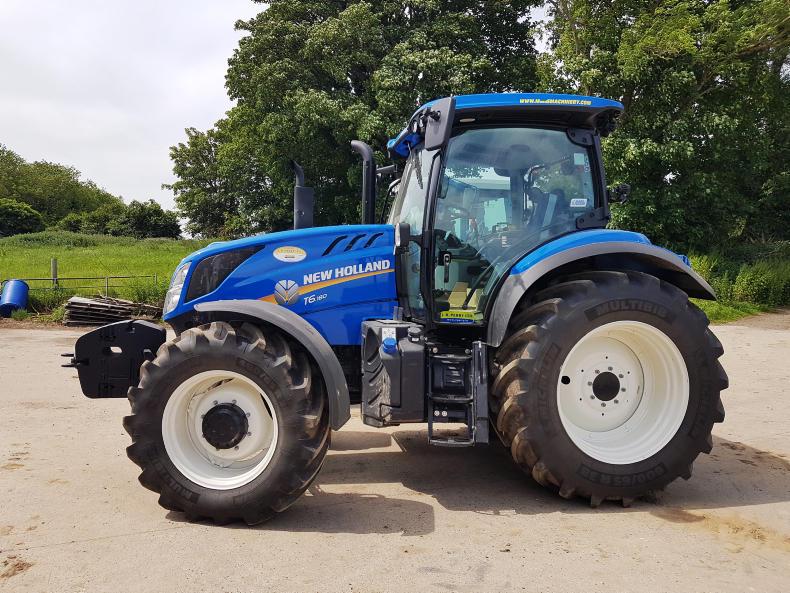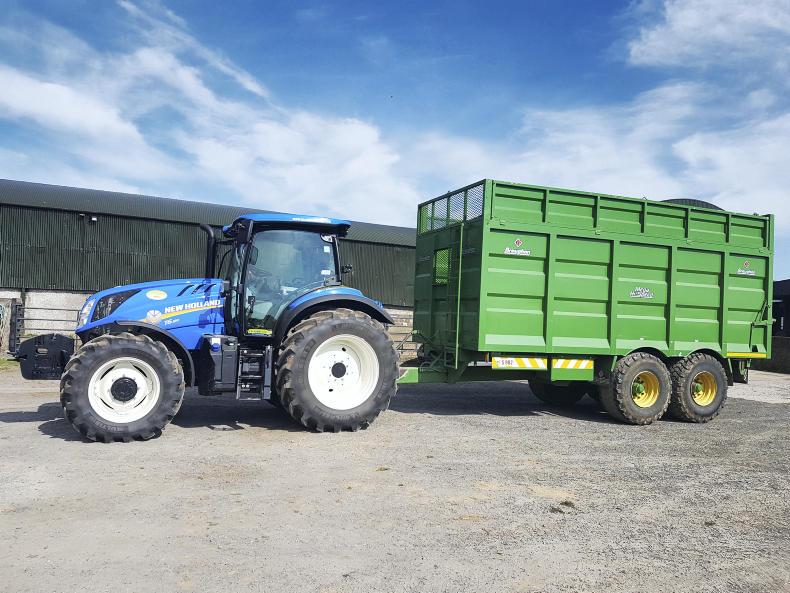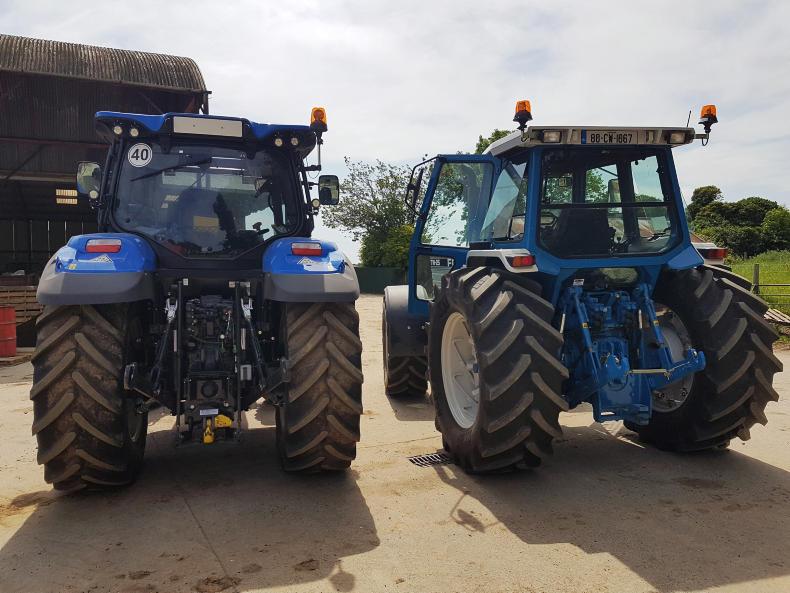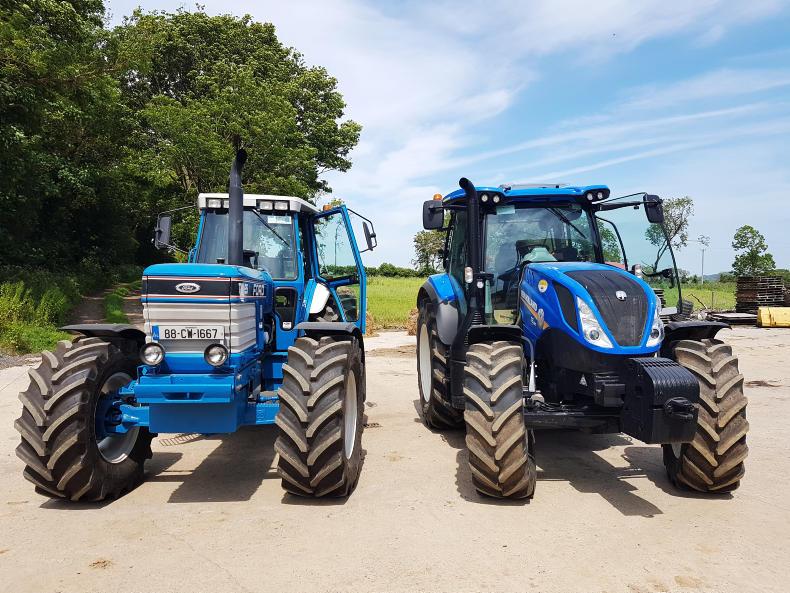 Many of us of a certain era will have spent our youth looking at the Ford TW with great reverence. So when the mention of a comparison test between a modern tractor and an older machine of similar horsepower came up, there was only one option and it was to find a TW and a matching horsepower new tractor to run together. Some of you will have seen a piece in the Irish Farmers Journal about the featured TW 25 a couple of months ago.
Many of us of a certain era will have spent our youth looking at the Ford TW with great reverence. So when the mention of a comparison test between a modern tractor and an older machine of similar horsepower came up, there was only one option and it was to find a TW and a matching horsepower new tractor to run together. Some of you will have seen a piece in the Irish Farmers Journal about the featured TW 25 a couple of months ago.
When I went to ask the owner if I could have his pride and joy for a day to actually do some work, I wasn’t sure what sort of reaction I would get, but to Joe Fennelly’s credit, his immediate reaction was: “Wouldn’t it be great to see the tractor pulling a modern silage trailer and comparing it to the modern machine.”
Once the old was sorted, the job of finding a matching horsepower modern blue was started and a T6 180 was sourced from JR Perry Ltd in Athy, Co Kildare.
 This is the largest model in the T6 range and the only one to still have a six-cylinder engine. It produces 145hp and can boost to the 180 figure on the bonnet. This boost will not be of any use for the field-based trailer work.
This is the largest model in the T6 range and the only one to still have a six-cylinder engine. It produces 145hp and can boost to the 180 figure on the bonnet. This boost will not be of any use for the field-based trailer work.
This means that the new blue was probably at a disadvantage of 10hp from the TW when the TW was new. Surely modern technology should make up for the slight power discrepancy.
Each of the tractors was to be hooked to a 20ft Broughan silage trailer and join the Rosenolvan Agri fleet for a day.
Hitching trailers
On the morning of the test, the two tractors were attached to their respective trailers and this was where the first major difference between old and new was seen.
Hooking up the T6 180 was as straightforward as you would expect, with its extendable pickup hitch and the great vision that this gives. Attaching the TW 25 to its trailer was a very different affair, as the old lady didn’t come with a pickup hitch, just a fixed drawing.
In order to get it attached, the trailer needed to be lifted by one of the other tractors in the fleet and left on timber blocks at the correct height to back in the TW and drop in the sizeable pin required.
Once the trailers were attached, it was time to head to the field.
Driving the TW 25
Climbing up into the cab of the big Ford was like stepping into a time machine. This beautifully restored tractor looked exactly as it would have in 1988 when it came out of the factory.
Once fired up and under way, it all felt very familiar. The engine made a great noise and the brakes on both tractor and trailer worked perfectly. With a top speed of 30km/h, it isn’t quick.
Once under the harvester, choosing the correct gear is essential, as changing gears under pressure can be a bit of a challenge, so use the foot-controlled dual power to match the harvester speed was essential.
Pulling away from under the harvester was a pleasurable experience
Vision from the cab back to the trailer and harvester cab and shoot are very good, but with some decent chunks of metal to peer around. Once the trailer was filled, it was time to head for the pit.
Pulling away from under the harvester was a pleasurable experience, as the big Ford puffed out a big smoke cloud and proved that most of the ponies under the bonnet were still alive and kicking.
Getting up to speed and up through the gears was a challenge for the first couple of loads, due to the non-synchromesh gearbox, but with some practice and patience I was getting the hang of it and making fairly smooth progress in the field and on the lane.

Heading for the pit, the TW was comfortable except for the fact the retro-fitted air conditioning failed to function on one of the hottest days of the year.
Reversing into the pit was straightforward and visibility via the mirrors was very good. Tipping the modern trailer was no issue weight-wise. There was a slight issue with oil volume in the back end, but it tipped far enough to get the load out.
Driving the T6 180
Getting up the steps into the T6 is a very different experience from climbing into the TW. This T6 180 came with an electro-shift 40km/h gear box. Heading to the field was a very uneventful experience, with the tractor doing everything you would expect from a modern tractor.
Gear changes were flawless and the air seat and huge cab made for a very comfortable ride. Once in the field and in under the harvester, the New Holland had a brilliant range of vision and the modern gearbox gave very good speed matching to the harvester.

Once the trailer was filled, the T6 pulled away with no fuss and no smoke. Getting up to speed was as easy as numerous pushes of a button, with no grinding noises.
The trip to the pit was very comfortable and the physically smaller tractor had more than enough power to haul the big trailer full of grass. Once at the pit, reversing in was started with a quick flick of the shuttle lever.
Visibility from the cab and via the mirrors was excellent, the only problem was the man on the pit being awkward and wanting the grass tipped and put up at the same time. Tipping the trailer was a pull of a lever, as this tractor has manual spool valves the exact same as the almost 30-year-old tractor. The T6 had more than enough oil to tip the trailer.
The verdict
Once the two tractors were finished doing their work, we brought them to a weighbridge to see what, if any, the weight difference was between them. The TW was a little over 1.1t heavier. This was expected, purely from the physical size difference.
Driving the two tractors, the main difference was the gearboxes. The modern box just made getting through the gears a pleasure. Having said that, the challenge of mastering the crash box in the TW was very enjoyable and I believe given a good stretch driving it, the movement between ratios would be become as smooth as silk.
The electronic shuttle on the T6 made for easier manoeuvring in and around the yard and pit in comparison to have to find a physical gear to change direction in the TW.

On the comfort front, the 30-year-old super Q cab held its own against it newer competition despite it being noisier and warmer. The heat issue was only due to a malfunctioning of the air con system.
On the power front, the TW felt like the more powerful machine, but this may be to do with the fact that it was a sensory experience including that lovely noise and spectacular visuals from the exhaust.
If push came to shove and I had to choose one of these tractors to do a long day’s work, the T6 would be the only sensible option, but the pure theatre and challenge of driving the TW would get my vote every time.
The Red, the Green and the Blue – the tractors of 1996 versus 2016
